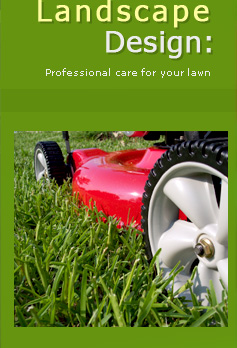


Lawn & Garden Maintenance Services | Lawn Care Products & Programs | FAQs & Lawn Tips
Lawn Care Products & Programs
Using the latest in organic methods and natural products, the Classic Organic Program features 5-6 visits using high quality corn gluten organic based fertilizer, aeration, and natural biostimulants and nematodes with a single goal in mind: thick, green turf.
With the abundance of sandy loam soils in our area, grubs have taken hold and remained a problem. We have two species (European Chafer and June Beetle) that have damaged many lawns, sports fields, sod fields and even agricultural crops in Uxbridge, Beaverton and surrounding locales.
Classic Organic Nematodes: All of these services (1-5) PLUS… if grubs have been a problem, we can apply nematodes. These little organisms are very sensitive and require a strict regiment of watering both before and after to ensure their survival. Nematodes are microscopic worms that seek out grub larvae. They occur naturally but not in sufficient number to control grub infestation. They are safe to use and are harmless to people, pets and the environment. Timing is critical and we will monitor when it is appropriate to make the treatment (late summer/early fall). Nematodes survive only in moist soils and it is vital to keep your lawn well watered during this time.
If you have a larger property that is not irrigated only in prolonged rain events can you be assured of nematode survival.
ChinchBugs: Are an even present threat to our lawns. Treatment options are limited. Should your lawn encounter this pest we will consult with you on the best course of action.
Should a problem on your lawn arise we encourage you to call our office as soon as possible in order to avoid extensive damage and costly repairs.
Additional services offered:
Common Lawn Care Problems
Insects
Moss Problems
Lawn Disease
Insects
Insects that infest home lawns are generally difficult to notice and their presence goes undetected until significant damage has been done. Insect damage can often be mistaken for drought damage. If the lawn remains brown or shows signs of thinning out despite watering, then closer examination for insects should be done. Regular inspection of the lawn including leaves, stems, roots, thatch and soil will help to determine if the problem is insect-related and catch the problem before extensive damage occurs. The most common lawn insect pests are:
Hairy Chinch Bug |
Grubs |
Bluegrass Billbug |
Sod Webworm |
European Crane Fly (leatherjackets) |
Turfgrass Scale |
Moss Problems
Mosses are primitive forms of green plants that form tangled clumps that grow in amongst a lawn. Moss plants have a tremendous capacity to spread. They produce large numbers of spores, each of which can give rise to a new moss plant. Mosses are poor competitors with a healthy lawn and are only a problem when the lawn is weakened by poor growing conditions. The following conditions that weaken a lawn and promote moss invasion:
Cultural methods can be effective in controlling moss. They are:
Name |
Description |
Conditions favouring disease |
Damage and Control |
|
|
|
|
|
|
|
|
|
|
|
|
|
|
|
|
|
|
|
|
|
|
|
|
|
|
|
Fairy Ring |
Leaf Spot |
Mushrooms |
Necrotic Ring Spot |
Powdery Mildew |
Rust |
Snow Moulds |
||
